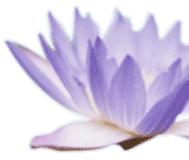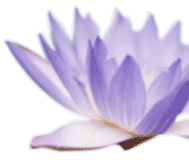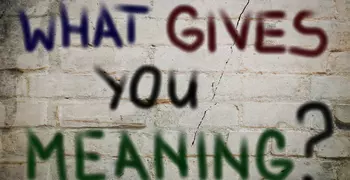
"Because it is not an organized religion as such, but rather a spiritual practice, shamanism cuts across all faiths and creeds, reaching deep levels of ancestral memory. As a primal belief system, which precedes established religion, it has its own symbolism and cosmology, inhabited by beings, gods, and totems, who display similar characteristics although they appear in various forms, depending upon their places of origin."
~John Matthews, The Celtic Shaman
What is shamanism?
Shamanism is a spiritual practice found in cultures around the world from ancient times up to the present day. First and foremost, shamans' practices are practical and adaptable. These practices coexist over millennia with varying cultures, systems of government, and organized religious practices.
Many formalized religions, from Buddhism to Christianity, came from ancient shamanic roots and still bear the shamanic threads of deep connection to the divine in all things. But shamanism itself is not a formalized system of beliefs or an ideology. Rather, it is a group of activities and experiences shared by shamans in cultures around the world. These practices are adaptable and coexist with different cultures, systems of government, and organized religious practices.
Individual practice
Nowadays, in non-indigenous cultures, shamanism is studied and practiced as a life path. Following a shamanistic perspective, individuals seek to be in relationship with the spirit in all things. They seek to use information and guidance from non-ordinary reality to intentionally form their own life experience.
This perspective is not inherently contradictory of any religious practice that allows a person to be in direct relationship with whatever they perceive as a higher power.
Consulting with shamans
Just as in ancient times, contemporary people consult with modern day shamanic practitioners for practical and pragmatic solutions to problems in everyday life-from personal illness, professional challenges, or family discord to ancestral issues.
Shamans work in voluntary, ecstatic trance states, which alter their consciousness to travel to the realms of the invisible worlds. Their ability to gain information and make changes in the invisible realms is dependent upon the working relationships they develop with spirits there. In this sense, shamanism is a relationship-based practice of making changes in invisible realms to impact healing, of individuals or communities, in the realm of ordinary reality.
For some peoples, such shamanic practice is part of their dominant culture, for others it is directly contradictory. Some individuals are intuitively guided to seek help from a contemporary shaman, often when other options have been exhausted, without even understanding what a shaman is or how they work.
What is a shaman?
According to famed American psychologist and consciousness pioneer, Stanley Krippner, shamans are "community-assigned magico-religious professionals who deliberately alter their consciousness in order to obtain information from the 'spirit world.' They use this knowledge and power to help and to heal members of their community, as well as the community as a whole."
Krippner describes shamans as the first physicians, diagnosticians, psychotherapists, religious functionaries, magicians, performing artists, and storytellers.
In shamanistic cultures, all adults are responsible for their relationships with spiritual energies, including those of their home environment (geography, animals, and plant life,) their ancestors, their own personal helping spirits, and Spirit, the creator force.
However, the shaman is unique in that he or she not only has increased facility for traveling in non-ordinary realms, but also uses their spirit relationships to create changes that will manifest in the physical world, for the healing of individuals or the community. This definition differentiates shamans from other types of practitioners. For example, mediums use altered states of consciousness, but they do not take action in those altered states. And sorcerers take action in altered states, but not necessarily to heal.
Abilities of shamans
According to Christina Pratt in The Encyclopedia of Shamanism, a shaman is a practitioner who has gained mastery of:
- Altered states of consciousness, possessing the ability to enter alternated states at will, and controlling themselves while moving in and out of those states.
- Mediating between the needs of the spirit world and those of the physical world in a way that can be understood and used by the community.
- Serving the needs of the community that cannot be met by practitioners of other disciplines, such as physicians, psychiatrists, priests, and leaders.
A shaman is therefore a specific type of healer who uses an alternate state of consciousness to enter the invisible world, which is made up of all unseen aspects of the world that affect us, including the spiritual, emotional, mental, mythical, archetypal, and dream worlds.
Categories of healers
There are three categories of contemporary shamans, including those who:
- Come from an unbroken shamanic tradition and continue to practice in that tradition, usually in their native culture.
- Come from a shamanic tradition, but serve to bridge between that tradition and the modern Western world, often by adding ceremonies and rituals that were not necessary in their indigenous culture.
- Are called by Spirit to serve the needs of their community as shamans, though they may be long separated culturally from their original shamanic roots.
How can shamanism benefit your health and wellbeing?
Individuals may seek shamanic healing for many different maladies. If they are living within a shamanic culture, shamanic healing is typically part of a multidisciplinary approach used for any disease or imbalance, in partnership with physical healers, botanical medicines, changes in diet, and other therapies.
In contemporary western society, shamanic healing is unfamiliar to most non-indigenous individuals. Despite that, people are finding their way to contemporary shamans for all types of health challenges, but especially when they are not making satisfactory improvements with conventional approaches.
Shamanistic perspective on disease
The perspective on individual disease is different in shamanism than in the conventional medical view. In a shamanistic view:
- Similar symptoms or diseases do not stem from the same underlying root energetic problem.
- Community disharmony often manifests in individual illness.
- Any illness may have a significant underlying spiritual or energetic issue, regardless of the form in which that illness manifests - physical, mental, emotional, spiritual, or relational.
Certain illnesses are more likely to have a spiritual component that may respond to shamanic healing techniques. These include psychological diagnoses like depression and anxiety, ADD/ADHD, autism, and addictions.
Illnesses that manifest physically may still have significant spiritual underpinnings. This is especially true for illnesses that have atypical or premature presentations, such as a degenerative illness that normally occurs in elder years occurring in a young adult.
The sense that something is "missing" or that "I haven't been the same since..." can often be indicative of an energetic loss of some type, including soul energy loss. Shamanic healing is often part of a multi-pronged approach to an illness, and is fully compatible with both conventional medicine and other integrative treatments, such as Traditional Chinese Medicine, homeopathy, naturopathy, chiropractic, and others.
Shamanistic healing
Shamanic healing work requires two distinct phases:
- The accurate diagnosis of the seen and unseen energies at the root of the problem.
- Carrying out the specific choreography of energies needed to resolve the problem.
The shaman may serve by removing energies that are inappropriately present, or by returning energies that have been lost. This includes soul recovery to accomplish healing via the return of lost parts of the soul.
When an individual is living within a community that supports such work, there is time and support for the integration and processing that an individual must do to complete most healing processes. In contemporary society, the shaman and the client must create the resources and structure for the individual to adjust to the shift in internal energies.
Shamans direct and move energy to restore the harmony within the individual, between the individual and the community, and between the community and the spirit world.
How do I find a shamanic practitioner?
For individuals who live within an indigenous culture, shamanic practitioners are readily known and easily accessible. But for the majority of contemporary westerners, shamanic practitioners are not known. As shamans are called to their practices through direct spiritual initiation, there is not a certifying body to register practitioners. That said, the Foundation for Shamanic Studies does post a registry of Certified Shamanic Counselors who have completed a training program in Core Shamanism through the foundation.
If you find a practitioner in your local community, ask friends and colleagues about their reputation. Then meet with the practitioner and ask how they were initiated and trained, as well as how they practice. One critical question is whether the practitioner would be available after a shamanic healing (especially a soul retrieval), to help with issues of integration and processing (or if they at least refer to a colleague to assist in that work).
Is there good evidence for shamanic healing?
Because shamanic healing is individualized to each unique person and their illness, it does not lend itself readily to conventional research designs. Additionally, there has been little interest in or financial support for research in these practices.
Thousands of years of practice indicate that shamanic approaches have value to those who use them, or they would not have survived and been perpetuated. Most understanding in this area has come from the observations of cultural anthropologists. In addition, in many early cultures, knowledge of plant curative properties came through the practice of Shamanism, knowledge which is still used today. There has been a growing body of academic studies in this field since the 1950s (classic texts are listed in the References and Further Information section below).
In recent years, some initial research efforts have begun, although they are still challenged by the design issues. The following are resources and websites that carry information about research publications, often focusing on a particular practice that may be used within shamanic healing (e.g. ayahuasca-facilitated healing) rather than on the general practice of shamanic healing as a system of care:
- Transpersonal Shamanism Research Project
- Peters, L. and Price-Williams, D. (1980). Towards an experimental analysis of shamanism. American Ethnologist, 1, 397-418.
A research strategy has been proposed by Michael Harner, PhD, anthropologist and founder of the Foundation for Shamanic Studies.
Reconnecting with your intuition
If you are a person who represses your intuition because of previous painful experiences, here are ways you can reconnect.
Reconnecting with Your Intuition
 If you are a person who represses your intuition because of previous painful experiences, there are ways you can reconnect.
If you are a person who represses your intuition because of previous painful experiences, there are ways you can reconnect.
Create a Forgiveness Pledge
Take out a piece , index card, or create an entry in your Intuition Journal. Fill in the sentence below. When you are done, find somewhere you can be alone and read it out loud to your intuition. If more memories and thoughts become present, include them in your Forgiveness Pledge.
I forgive myself for all the ways known and unknown that I have not interacted with my intuition and wisdom in a healthy and helpful way. With this statement, I pledge myself to learning from intuition and begin my healing today.
Visualize Reconnecting
Life brings us many opportunities to begin relationships with ourselves and others again. We all have relationship histories that can bring up memories of disappointment, hurt, and/or guilt. None-the-less, if we have been separated from a loved one for a period of time, these memories fade in importance when we have the opportunity to reconnect at a new and potentially more authentic and profound level.
To begin this exercise, remember a time when you were at the airport either waiting for someone yourself or watching someone else who is obviously waiting to be reconnected with a loved one. Play back in your mind the joy, hugs, and welcome expressed by both parties when they see each other.
Breathe deeply, counting 1 on the inhale and 2 on the exhale. Let all other thoughts in your mind go and focus on the breath and simple counting. Breathe naturally.
When you are relaxed and centered, imagine you are at the airport waiting for a loved one: your intuition.
Experience how excited your body and spirit are to know that this reconnection with your wise, intuitive self will open a new life for you. Let any known and unknown knowledge wounds you may be holding melt away in the light of your delight.
Let intuition take any form that is natural a male or female, young or old, someone you know, a perfect stranger, an animal, an object someone has shipped to you. Using your imagination, see, feel, hear and fully sense the wonderful, mutual celebration you and your intuition experience when you greet each other with joy. All residues of past problems have melted away.
See yourself walking out the airport door, towards your life in partnership with your intuition. There is no need to look back.
Write a Companion Love Letter
Using an intuition journal or other journal, write a direct and simple love letter to your intuition. Invite your intuition to be your companion in life÷to guide you, to inspire you, to identify your purposes, to make you laugh, to increase your sense of belonging, to reveal connections, to help your grow as a person, and anything else that you would like to develop or experience inside yourself.
Think deeply about what it is you want to pledge to your intuition and then write about it. Have you created an equal partnership? If there is anything you need to add or subtract now or in the future, change your letter and pledge as needed.
Keep this record and look back in 6 months and see what has changed. If you find this method for reconnecting satisfying, repeat it every year.
Author Sharon Franquemont © 2006 Life Science Foundation, used with permission.
Using intuition for health and wellbeing
Learn how to love and listen to yourself with these intuition exercises
Using Intuition to Improve Health and Wellbeing
Love and Appreciate Your Body

To begin, identify one part of your body (eyes, hands, waist, arms, etc.) that you really like, or one thing your body does well such as walking, dancing, sports, deep breathing, playing music, etc. This part must be something that you really like, not something you wished you like or sort of like. It doesn't matter if you have chosen this part before.
Once you've identified the part you like or the activities your body supports, give love and appreciation to your body during your morning routine. While you are combing your hair, brushing your teeth, or showering, speak to your body in your mind or out loud. Either way, your body hears you. For example, "Thank you, wonderful eyes, for how attractive you are, all the wonderful things that you show me, and the ways you let me share my feelings with others."
When you have done this with consistency, you can drop it as part of your morning routine and do it any time during the day.
Listen and Attend to Your Body
- Stillness Exercise. Draw or imagine a large circle with a dot in the center. Take a few deep breaths and relax as much as possible. When you are ready, focus on the dot in the center of the circle and inhale slowly. Keeping your focus on the dot, hold your breath for a few seconds. Exhale slowly. Inhale again focusing on the dot, but as you exhale, shift your focus slowly to the large circle surrounding the dot. Hold for a few seconds. Begin your inhale and focus on the dot. Hold. Exhale focusing on the large circle. Hold. Repeat your inhale and exhale until you experience stillness inside you.
- Scanning Exercise. Do the Stillness Exercise (above). When you feel still, imagine that your inner, intuitive eyes can operate like a scanner. Allow your inner eyes to 'scan' your body with x-ray vision that can see through your body. Start at the top of your head and go back and forth all the way down to your feet. When you are done, if you wish, you can retrace your steps. Begin with your feet and go up to the top of your head. You are looking for (1) any places that draw your attention and (2) changes in what you perceive to be your normal pattern(s). If either of these arise while you are scanning, turn your attention those areas and gently imagine yourself breathing warmth and caring into that area. Jot down your experience and do the scanning exercise again in a few days. Pay attention to what you sense and feel during the exercise and throughout the day.
- Body's Messages. Act on your body's messages within the parameters of common sense. If you become concerned about something, write your concerns down. Examine your concern from a variety of perspectives. Ask yourself questions such as, How long have I been concerned about this part of my body? What are simple steps that I can take to discover what is bothering me? If this concern was a message from my body, what would that message be? Is there someone whose perspective about this concern would be helpful? At what point should I seek a healthcare provider's opinion? Am I using common sense?
Grow and Nourish Your Sensitivity
- Stimulation. Avoid constant work, television, media exposure, or activities that can numb you. Learn to slow down or stop. Cherish time in quietude.
Select one evening per week or per every two weeks when you will not work, turn on the media, or do other things to avoid quiet. Instead of fasting from food, practice fasting from noise. Give yourself quiet for at least 20 minutes. When you've become accustomed to the absence of stimulation, take a question into your quiet. Invite intuition to be at work. - Exercise. Intuition requires energy and alertness. Exercise elevates your circulation and reduces tension. Find a physical activity that you enjoy and do it three times a week.
Meditative walking is centuries old. Select a place you like to walk in nature or in the city. Clear your mind as much as possible. Begin to walk by watching your feet out of the corner of your eye. Pay attention to one foot and then pay attention to the other. Alternate your attention from one foot to the next as you walk. If thoughts enter your mind, return your attention to your feet. Walk for 20 -30 minutes using this technique. When you finish your walk, sit still for a few minutes and note any creative thoughts that you have. - Rest. Regular restoration of the body through relaxation and sleep keeps you alert to your body's signals. Make a conscious decision to sleep, nap, or relax when your body indicates a need.
Practice the Stillness Exercise (above) until you can obtain inner stillness within a minute or two of beginning the circle-dot breathing. Or, choose a time of day for a 10 - 20 minute nap, such as before or after dinner; or immediately when you come home. Invite your intuition to visit you during your rest periods . - Food. While you wouldn't buy gasoline that revs your car engine to unsafe speeds, makes your car sputter along, or stalls your engine out, many people eat food that does just that to their bodies. Nourish your body's sensitivity to intuition with good food. Choose a food type you think is not good for you (sugar, fat, excessive starches, etc.) and go without it for as many days or weeks as you can. Notice any change of thoughts, behaviors, or sense of wellbeing. Re-introduce the food slowly, asking your body to clearly signal you if it isn't contributing to your health. Ask your intuition to guide you to food that is better for you.
- Thoughts. Medical research on stress shows that thoughts and emotions can directly impact your physical body. In addition, preoccupation with difficult or negative thoughts can result in bad moods and/or a reduced sense of wellbeing. Guard your mind; invest in thoughts that make a positive contribution to your life.
- Sit still and imagine that you are holding a magic mirror that reflects the quality of your thoughts. Focus on a thought that makes you feel serene; look in the mirror. What does the serene thought look like? Then invite thoughts that you enjoy, such as happy, creative, insightful, or uplifting thoughts. Each time a thought arises, look in your magic mirror and notice what is reflected back to you. Imagine that these images are reflecting sunshine back to you.
- Holding the magic mirror in your hands and looking into it, allow a challenging thought to arise---something which worries, depresses, saddens, or angers you. How does the image in the mirror change? How does your body feel while you are holding these thoughts?
- Bring thoughts that reflect sunshine back into your mind. Allow these thoughts to gently evaporate your challenging thoughts much like fog disappears from a mirror when the sun hits it.
- Experience the magic mirror as a guardian of your inner being setting you free to be clear and reflective rather than preoccupied with challenging thoughts. Release your inner reflective sun.
String Theory Intuition
When trying to enhance your sensitivity to intuition, it may help you to apply some of the ideas of modern physics. The string theory suggests that the core building blocks of the universe and your body are miniscule vibrating strings. Think of your intuitive body as a vibrating, information-rich field that is in constant communication with the world around and within you.
- Sit or stand somewhere. Inhale deeply and exhale slowly until you are relaxed. Experience your body as an exquisitely designed instrument composed of millions of sensitive strings that vibrate in response to deep, silent communication without words. Focus on what you are looking at, hearing, or sensing at that moment. It might be a flower, book, stone, bottle, fence, etc. It could be anything. When you are focused on whatever attracted your attention, imagine that information is being exchanged via sensitive string 'waves' inside each of you. You can't hear or see anything being exchanged, but you recognize that you are in active communication. Using your imagination, thank whatever you communicated with and look around your surroundings. Find another attraction and allow yourself to experience the vibratory information exchange between you and it. After a few minutes exchange, thank what you focused on. Repeat by finding another attraction and doing the same thing.
- After you have completed the information exchange and expressed gratitude 3 or 4 times, ask yourself: What links these attractions together? How are they alike? How are they different? What attracts me profoundly at the level of my strings? What have I learned from this experience? What do I know about life that I didn't know? What questions do I still have?
Author Sharon Franquemont © 2006 Life Science Foundation, used with permission.
Dream journal exercise
Dreams are a way for the unconscious to work on issues that may not yet be in the conscious mind. Try keeping a dream journal.
Dream Journal
Dreams are a way for the unconscious to work on issues that may not yet be in the conscious mind. While very few dreams are prophetic, they can provide precise insights into our personal needs, desires, and concerns. They are also compensatory and healing.
Dreams are highly symbolic, so they are frequently dismissed as silly or useless until the dreamer starts to take them seriously by writing them down and reflecting on them symbolically.
Keep a dream journal by your bed and allow yourself a few minutes each morning to write down what you remember. You will probably find that you remember more and more of your dreams as you do and begin to develop an understanding of your own unique symbolic language. Be sure that you don't rush to interpret your dreams—let them speak to you, perhaps over time. Dreams are often multilayered and their truth may not become evident until years later.
Can you remember any dreams or dream fragments from last night?; If not, can you remember a vivid dream from the past?Take a moment to write down the dream without editing it, no matter how irrational it seems.
- Where were you?
- What did it look like?
- What were you doing?
- Who else was there?
- How did you feel?
- What happened?
Note the words used. Look up meanings in the dictionary
Don't try to interpret the dream, just reflect on it and allow the meaning to emerge.
Books
Art, R.L., Firnhaber, R.P. (Eds.) (2004). Shamanism in the Interdisciplinary Context. Boca Raton, Fla.: Brown Walker Press.
Hammerschlag, C. (1989). The Dancing Healers. San Francsico, Calif.: HarperSanFrancisco paperback.
Heinze, R.I. (1991). Shamans of the 20th Century. New York: Irvington Publishers, Inc.
Ingerman, S. (2004). Shamanic Journeying: A Beginner's Guide with CD. Boulder, Colo.: Sounds True.
Ingerman, S. (2006). Soul Retrieval. San Francisco, Calif.: HarperSanFrancisco.
Keeney, B. (1994). Shaking out the Spirits. Barrytown, N.Y.: Station Hill Press.
Perkins, J. (1994). The World is as You Dream It. Rochester, Vt.: Destiny Books.
Pratt, C. (2007). The Encyclopedia of Shamanism. New York: Rosen Publishing Group.
Som'e, M. (1993). Ritual, Power, Healing and Community. New York: Penguin Books.
Websites
The Foundation for Shamanic Studies
Journals
Shaman: Journal of the International Society for Shamanistic Research, 1, 1 (1993), Szeged, Hungary: Molnar & Kelemen Oriental Publishers.
This journal publishes original articles in English on shamanism and neighboring fields as well as reviews of current books, brief accounts of work in progress and announcements of coming events.
Shaman's Drum: A Journal of Experiential Shamanism and Spiritual Healing, 1 (1985), Williams, Ore.: Cross-Cultural Shamanism Network.
This journal publishes original field research, cross-cultural comparative studies, and personal experience articles on all aspects of shamanism, spiritual healing, and ecstatic religion. In addition there are critical reviews of books and other media about shamanism or closely related subjects.










